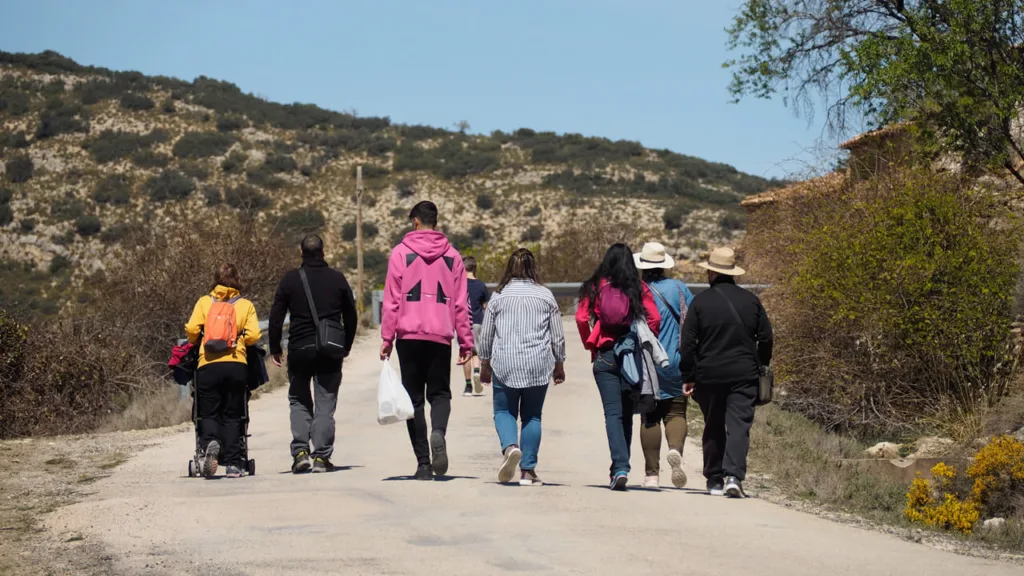The Impact of Ecuadorian Immigration in New York

Ecuadorian immigration to the United States has evolved from a marginal trend to a common reality for thousands of families. What began nearly a century ago as a modest migration flow is now one of the main routes for those seeking to escape economic hardship and build a better future.
This trend has intensified in recent years. Between 2021 and 2023, more than 300,000 Ecuadorians left their country, with the United States becoming a preferred destination to start anew.
In light of this growing phenomenon, it’s essential to understand its roots, driving forces, and long-term implications.
In this article, Moumita Rahman—Immigration Attorneys’ team examines Ecuadorian immigration to the United States. From its historical beginnings to more recent motivations, we analyze the reasons so many Ecuadorians have left their homeland.
Where Do Most Ecuadorians Settle in New York?
New York is home to the largest Ecuadorian community in the United States, with over 180,000 Ecuadorians primarily concentrated in three boroughs: Queens, Brooklyn, and the Bronx.
The migration wave intensified at the end of the 20th century, particularly during periods of political and economic turmoil in Ecuador, such as the 1999 financial crisis, which triggered a significant surge in emigration.
1. Queens
Queens is widely recognized as the heart of the Ecuadorian community in New York, especially in neighborhoods like Jackson Heights and Corona.
Jackson Heights, a vibrant melting pot of Latin American cultures, hosts a strong and enduring Ecuadorian presence.
Corona, often referred to by outlets like The New York Times as the “unofficial capital of Ecuadorians in New York,” is a hub not only of Ecuadorian residences but also of community organizations, social clubs, and mobile consulates that serve the diaspora.
2. Brooklyn
In Brooklyn, Ecuadorians are most notably found in areas such as Bushwick and Sunset Park. Although the population density is lower than in Queens, there has been steady growth in the past decade—driven by both new waves of immigration and internal migration from other parts of the city.
3. The Bronx
The Bronx has also seen a steady increase in its Ecuadorian population, especially in neighborhoods like Morris Heights, University Heights, and Fordham.
More affordable housing options and proximity to Queens have made the Bronx an appealing choice, facilitating strong family and employment networks.
Institutions and Community Life
Ecuadorian communities in these boroughs have not only established residences but also cultivated vibrant cultural and institutional lives. Notable events and activities include:
- The annual Ecuadorian Independence Day Parade in Queens (held every August)
- Religious celebrations honoring Our Lady of El Cisne
- Community outreach led by the Federation of Ecuadorian Institutions in New York (FIE)
In recent years, Ecuadorian immigrants have also become increasingly active in local politics, with candidates of Ecuadorian origin running for public office and participating in civic life.
What Challenges Do Ecuadorian Immigrants Face in the U.S.?
Despite their significant social, cultural, and economic contributions, Ecuadorian immigrants face numerous structural and personal challenges that affect their quality of life and integration.
Key areas of concern include immigration status, language barriers, access to health care and education, and experiences of discrimination.
1. Precarious Immigration Status
A substantial portion of Ecuadorian immigrants arrive in the U.S. without legal documentation or on temporary visas. This limits employment opportunities, impedes legal stability, and increases vulnerability to labor exploitation and deportation.
Many are excluded from social programs, including health insurance and education scholarships. According to El Comercio (2022), Ecuadorians often face complex immigration processes due to lack of legal guidance and the high cost of legalizing their status.
2. Language Barriers
For many Ecuadorians, limited English proficiency is a significant obstacle. It restricts job opportunities, complicates access to public services, and hampers full participation in society.
3. Limited Access to Health and Education
Most Ecuadorians without legal status lack health insurance, making both preventive and emergency care difficult to access. The International Organization for Migration (IOM) has documented systematic gaps in health access for Latin American migrants, often compounded by limited knowledge of how to navigate the healthcare system.
4. Discrimination and Xenophobia
Ecuadorian immigrants, like many others from Latin America, frequently experience discrimination, microaggressions, and social exclusion—particularly during times of political polarization or economic instability.
Media outlets, including The New York Times, have reported incidents of workplace harassment and abuse by immigration authorities affecting Ecuadorians and other Latino communities.
5. Migration-Related Trauma and Mental Health Challenges
Migration—especially when prompted by economic or political crises—can take a serious psychological toll. Many immigrants suffer from anxiety, depression, social isolation, or even post-traumatic stress, particularly those who have taken dangerous migration routes or been separated from family.
Still, Ecuadorian communities have shown remarkable resilience by organizing support networks and working collectively to foster positive change in the cities where they live.
How Have U.S. Immigration Policies Affected Ecuadorians?
U.S. immigration policy has had a direct and profound effect on Ecuadorians seeking safety and opportunity.
Rising Deportation Rates
Between 2022 and 2024, deportations of Ecuadorian nationals increased sharply. According to Swissinfo, over 32,000 Ecuadorians were deported from the U.S. in just two years:
- 18,400 in 2023
- 13,600 in 2024
This rise stems from stricter immigration enforcement, including fast-track deportations under Title 42 (active through mid-2023) and policies such as “Remain in Mexico,” which, while not directly targeting Ecuadorians, affected migration patterns throughout the region.
Asylum Application Barriers
The asylum process has become particularly challenging for Ecuadorian nationals. In 2022, only 23% of Ecuadorian asylum claims were approved—significantly lower than approval rates for applicants from countries like Venezuela or Nicaragua (according to TRAC at Syracuse University).
Social and Psychological Impact
Restrictive immigration policies contribute not only to legal instability but also to psychological distress. Family separations, lack of protection for children, and pervasive fear affect many Ecuadorian immigrants without lawful status.
According to Community Psychology, deportations can trigger chronic anxiety, depression, and distrust of public institutions among affected families.
Riskier Migration Routes
In response to tightening border controls, many Ecuadorians are resorting to highly dangerous migration routes, such as crossing the Darién Gap. These paths expose migrants to organized crime, human trafficking, and life-threatening natural conditions.
These realities underscore the urgent need for more inclusive immigration policies that protect and support Ecuadorian immigrants.
Resources Available for Ecuadorian Immigrants
Various resources exist to assist Ecuadorian immigrants in the U.S.:
- Consulates: Ecuadorian consulates and the Embassy provide legal and consular assistance.
- Community Organizations: Groups like Movimiento del Migrante offer support in areas such as education, employment, and health.
- Legal Services: Immigration attorneys can help navigate complex legal processes and protect immigrants’ rights.
Accessing these resources is key to successful integration and improved quality of life.
How Has Ecuadorian Immigration Contributed to New York’s Economy?
Ecuadorian immigrants have made substantial contributions to New York’s economic development:
- Entrepreneurship: Many have launched businesses that create jobs and stimulate local economies.
- Labor Force Participation: Ecuadorians play a critical role in industries such as construction and service.
- Consumer Spending: Their presence strengthens local commerce and boosts overall demand.
These contributions highlight the vital role of Ecuadorian immigrants in the city’s growth and prosperity.
Opportunities for Ecuadorians in the United States
Despite ongoing challenges, Ecuadorians in the U.S. have access to numerous opportunities:
- Education: From public schools to prestigious universities, immigrants can access quality education.
- Employment: Key sectors like hospitality, construction, and personal services offer job opportunities.
- Entrepreneurship: Many Ecuadorians have built successful businesses, adding value to their communities.
- Legal Pathways: Options such as family reunification and employment-based visas offer paths to permanent residency.
With the right support, many Ecuadorians have achieved successful integration and contributed meaningfully to their new communities.
How Can Ecuadorians Obtain U.S. Permanent Residency?
Ecuadorians have several legal pathways to obtain lawful permanent residence (a Green Card):
- Family Reunification: Immediate relatives of U.S. citizens or permanent residents may apply.
- Employment-Based Visas: Certain occupations qualify for visas that lead to residency.
- Diversity Visa Lottery: Ecuadorians may be eligible through this program for countries with lower immigration rates.
- Asylum: Those facing persecution in Ecuador may apply for asylum.
Consulting an immigration attorney is strongly recommended to determine the best legal strategy for your specific case.
Building a Future in the U.S. as an Ecuadorian Immigrant
In the face of restrictive policies and structural barriers, Ecuadorians across the country are building futures with determination and resilience. Their presence is felt in vibrant neighborhoods, thriving businesses, and a cultural identity that adapts without losing its roots.
At Moumita Rahman—Immigration Attorneys, we are proud to stand beside those who fight to stay in this country and secure a future with dignity. Our team has supported countless individuals in their legal journeys and remains committed to defending immigrant rights.
The Ecuadorian immigration journey is one of courage, sacrifice, and hope. If you’re considering starting your immigration process, know that you’re not alone. The path may be difficult, but with the right legal support and community resources, a better life is within reach. Contact us today to evaluate your case.



